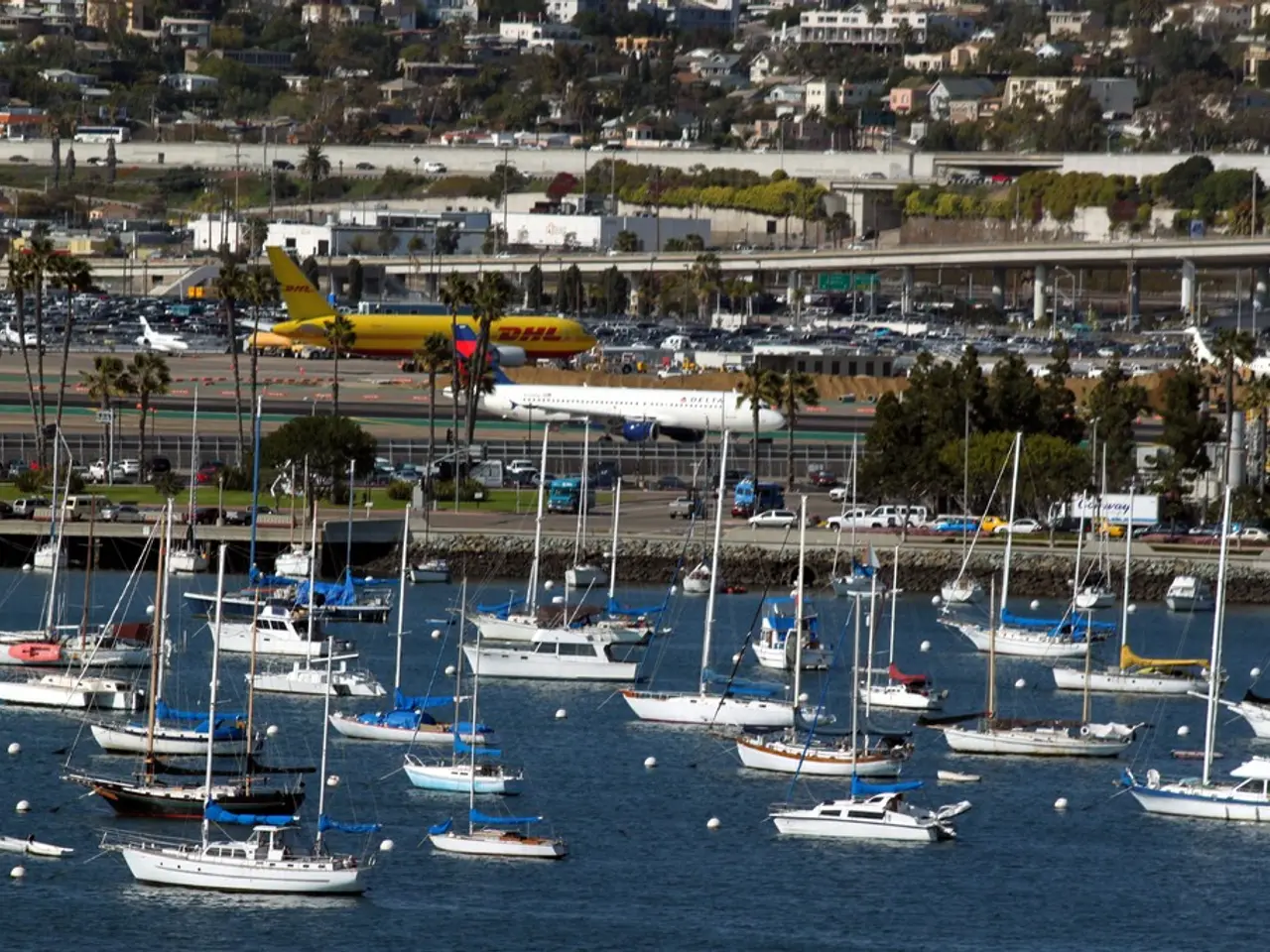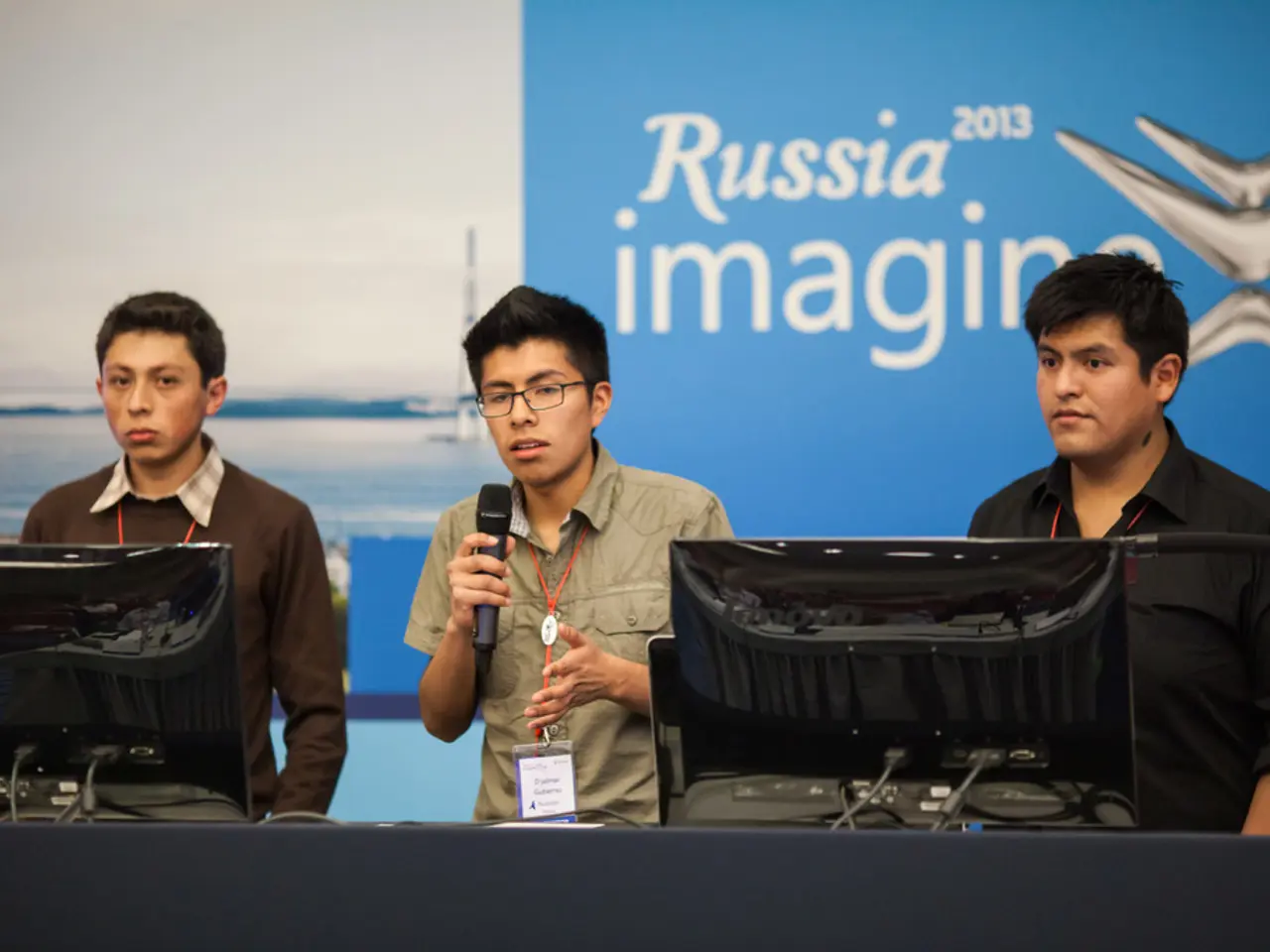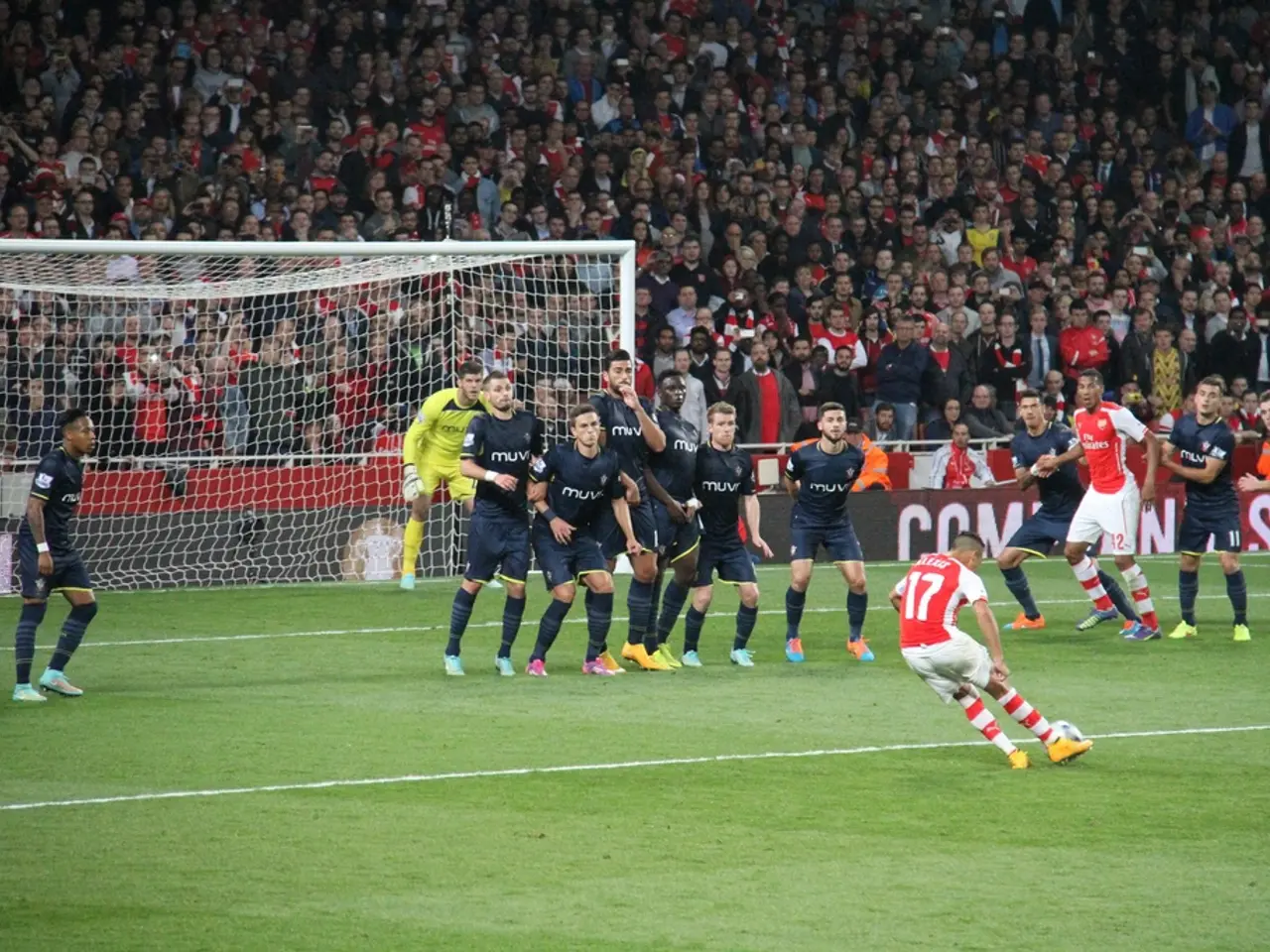Russia's cancellation of the grand naval parade during the July Storm exercises has dampened the spirits of the West and Ukraine, as the extensive military drills remain a source of concern.
Russia's "July Storm" Military Exercises Raise Concerns for NATO and Surrounding Countries
Russia's largest recent naval drills, known as "July Storm," took place from July 23 to 27, 2025, involving over 15,000 personnel, more than 150 naval vessels, 120 aircraft, and multiple missile systems [1][4][5]. The exercises spanned across the Arctic, Baltic, Pacific, and Caspian seas, focusing on advanced naval warfare capabilities such as anti-submarine warfare, countering unmanned threats, and long-range precision strikes.
The potential implications for NATO’s eastern flank, particularly concerning the strategically vital Suwalki Gap and neighboring countries, have raised regional security concerns. The extensive scope of the exercises, encompassing multiple theaters and various fleets, signals a demonstration of military readiness and power projection that could be perceived as a strategic warning to NATO states bordering Russia and the Baltic Sea states near the Suwalki Gap.
The drills included simulated repelling of aerial and surface drone attacks, coastal missile defense, and strikes against maritime and land targets, indicating preparation for multi-domain conflict that could involve the Baltic region. While none of the specific sources mention direct maneuvers through or near the Suwalki Gap, the comprehensive nature of the exercises across Russia's northern and Baltic naval forces hints at Russia’s strategic focus on responding to NATO presence in the northwest, thus raising concerns about rapid interdiction capabilities of key NATO transit corridors.
Neighboring countries and NATO likely view these exercises as underscoring Russia’s capability and intent to militarily challenge NATO’s presence and readiness in its eastern flank. In response, German Navy ships are monitoring Russian military activity in the Baltic to prevent threats to Germany and its allies, while Estonian patrol boats have interrupted attempts to board tankers calling at Russian ports as a precautionary measure.
Despite the potential cancellation of the main naval parade in St. Petersburg on Navy Day, Russia opted for conducting large-scale military exercises named "July Storm" instead [6]. Western media expressed satisfaction and joy over the potential cancellation, stating "Russia has been forced to cancel a major military parade." More than 15-16 thousand servicemen, including marines, are participating in the "July Storm" exercises.
In summary:
| Aspect | Details | |-----------------------------|------------------------------------------------------------------------| | Scale of Exercises | Largest recent Russian naval drills with 15,000 personnel, 150+ ships | | Theaters Involved | Arctic, Baltic, Pacific, Caspian seas | | Military Focus | Readiness for non-standard operations, anti-submarine warfare, drone defense, long-range strikes | | Implications for NATO | Heightened alert, concerns over rapid military action near Baltic states, indirect challenge to Suwalki Gap security corridor| | Neighboring Countries’ Concerns | Risk of disrupted NATO reinforcement routes in the eastern flank | | Response from NATO Allies | Monitoring Russian military activity, precautionary measures, potential cancellation of naval parades |
Overall, "July Storm" serves as a multifaceted signal of Russian military capabilities and intent, reinforcing concerns in NATO capitals, particularly in states bordering Russia and along critical land corridors like the Suwalki Gap, about maintaining readiness and deterrence [1][4][5].
[1] New Eastern Europe (2025). "Russia’s 'July Storm' Military Exercises Pose a Threat to NATO’s Eastern Flank." New Eastern Europe. Retrieved from https://neweasterneurope.eu/2025/07/28/russias-july-storm-military-exercises-pose-a-threat-to-natos-eastern-flank/
[2] Ukrainian Press (2025). "Ukraine Warns of the Need to be on Guard Ahead of New Russian Military Preparations." Ukrainian Press. Retrieved from https://ukrpress.com/2025/07/25/ukraine-warns-of-the-need-to-be-on-guard-ahead-of-new-russian-military-preparations/
[3] Swedish and Finnish Press (2025). "Sweden and Finland Express Concern over Russian Military Maneuvers at Sea." Swedish and Finnish Press. Retrieved from https://swedfinpress.com/2025/07/26/sweden-and-finland-express-concern-over-russian-military-maneuvers-at-sea/
[4] The Baltic Fleet (2025). "The Baltic Fleet Observes Young Naval Forces from Sweden and Finland." The Baltic Fleet. Retrieved from https://balticfleet.mil.ru/2025/07/24/the-baltic-fleet-observes-young-naval-forces-from-sweden-and-finland/
[5] Poles and the Balts (2025). "Poles and the Balts Fear the 'Possible Transfer of the Suwalki Gap' to Russia." Poles and the Balts. Retrieved from https://polesandbalts.com/2025/07/25/poles-and-the-balts-fear-the-possible-transfer-of-the-suwalki-gap-to-russia/
[6] Western Media (2025). "Western Media Express Satisfaction and Joy over Potential Cancellation of Russian Military Parade." Western Media. Retrieved from https://westernmedia.com/2025/07/28/western-media-express-satisfaction-and-joy-over-potential-cancellation-of-russian-military-parade/
The increased focus on advanced naval warfare capabilities during Russia's "July Storm" military exercises may lead to political discussions about war-and-conflicts, as these exercises could signal a potential threat to surrounding countries, particularly NATO allies and nations near the strategically vital Suwalki Gap. The vast scale and multitude of theaters involved in these exercises hint at the politicization of general-news, as nations nearby may view the drills as a strategic warning and a demonstration of Russia's military readiness and power projection.





